Photography comes from the Greek and can be translated as “writing with light”: a photo is all about light.
As a photographer, your job is to work with, capture, and shape the available light to create compelling images, and you can do this by mastering aperture and shutter speed.
But what is aperture in photography? This article will not only answer this question but will also teach you how to use aperture to improve your photography.
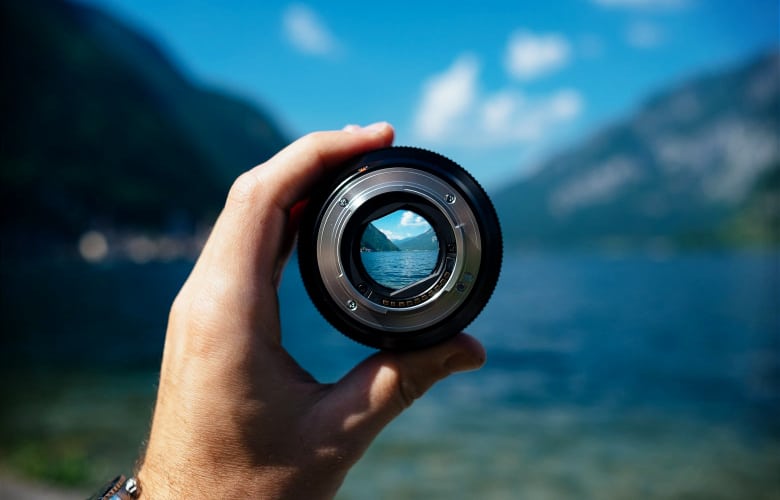
What Exactly is aperture in photography?
In photography, aperture refers to the opening of the diaphragm in a photographic lens. By controlling the diaphragm, the photographer can control the amount of light able to reach the sensor and other aspects of photography.
While the concept of aperture, a hole through which light can pass, seems to be a simple one to grasp, understanding how the aperture works in different optical systems is not as straightforward.
The Relation Between Aperture, Entrance Pupil, F-number and F-stop
A telescope is the simplest optical system to consider when discussing aperture, as there no diaphragm to further limit the amount of light the scope can collect.
In this case, the aperture is simply the diameter of the entrance pupil, which is the diameter of the front lens or primary mirror.
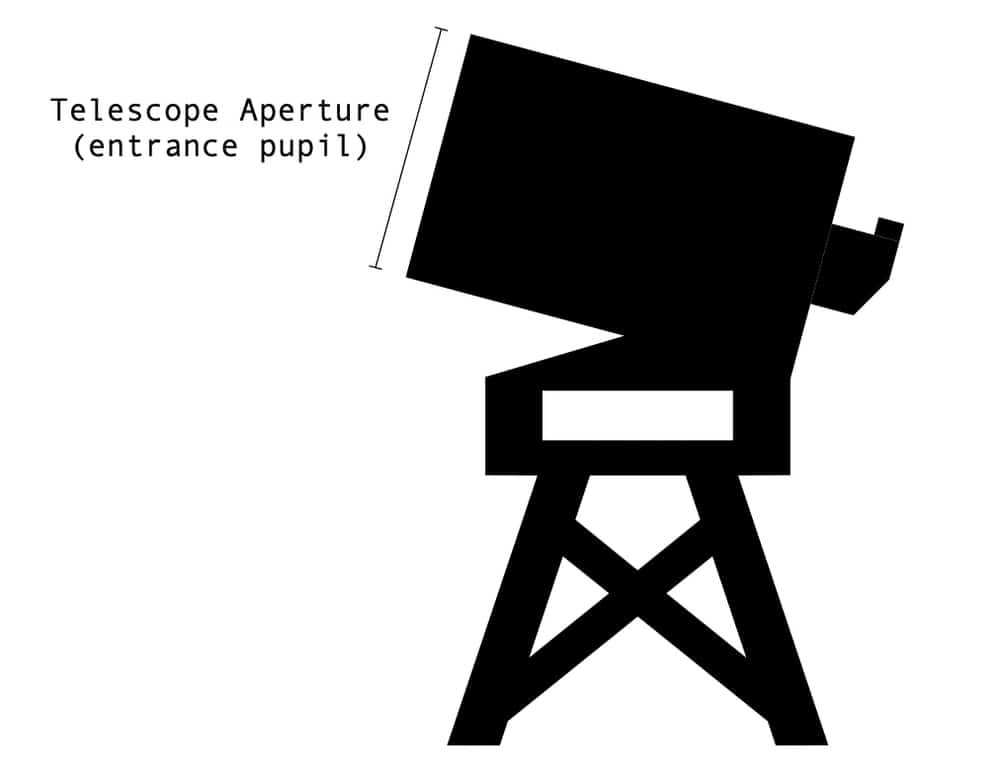
In telescopes, the aperture (entrance pupil) is simply the diameter of the lens or primary mirror.
The aperture and the focal length of an optical system determine its speed, i.e., how fast you can collect light with it.
The speed (also known as f-ratio or f-number) is defined as the ratio between the focal length, L, and the diameter, D, of the entrance pupil, both being expressed in mm.
f-number = L / D
With photographic lenses, the same concepts apply, but things get complicated by the presence of the diaphragm.
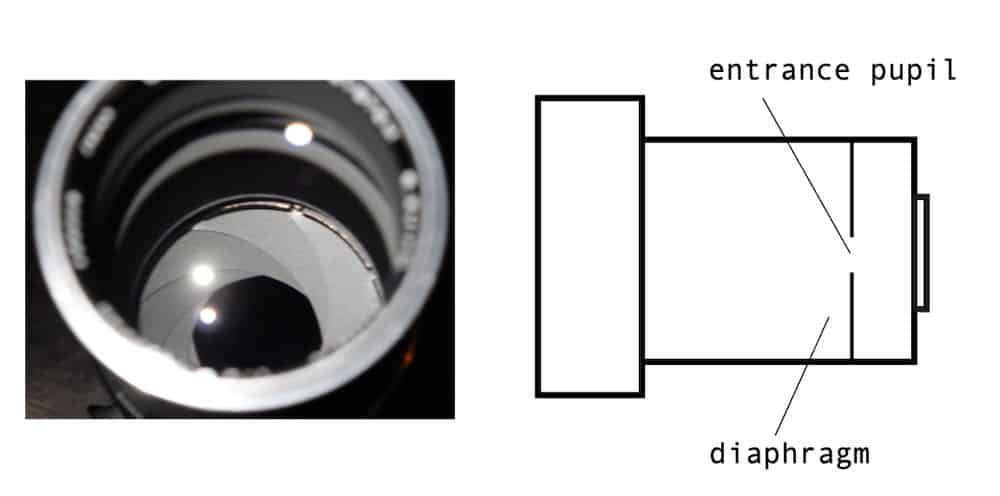
In the language of everyday photography, aperture is a synonym of f-stop, and its value is expressed by f-numbers such as 4, 5.6, 8, …
In essence, the f-stops are the same f-numbers defined above, but now the entrance pupil to consider, i.e., the aperture, is the opening of the diaphragm.
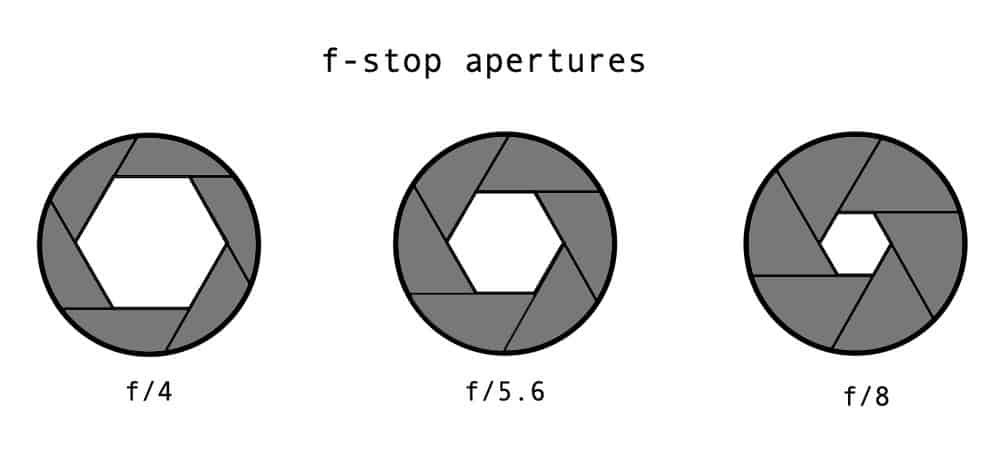
And they are called f-stops because the opening of the diaphragm is adjusted in discrete steps, called stops.
But what is a stop? In photography, stops are used to quantify ratios of light or exposure.
Every time you open up (or close down) your diaphragm by 1 stop, you double (or cut in half) the amount of light that can reach the sensor;
A full stop represents a change in exposure of 1 Exposure Value, or 1 EV.
Lenses allowing to change the aperture by one stop at a time use the full stop scale, for which the corresponding f-numbers are typically:
f/1 – f/1.4 – f/2 – f/2.8 – f/4 – f/5.6 – f/8 – f/11 – f/16 – f/22 and f/32
Some manual lenses, and all digital ones, can adjust the diaphragm in steps of ⅓ and/or ½ of a stop.
At first, comparing f-stops and f-numbers can be counterintuitive. The easiest way to do so is to consider them as fractions: like ½ is larger then ¼, the aperture at f/2 is larger than at f/4.
Aperture And The Exposure Triangle
Together with shutter speed and ISO value, aperture forms the so-called exposure triangle and determine the exposure of a photo, i.e., it’s overall brightness.
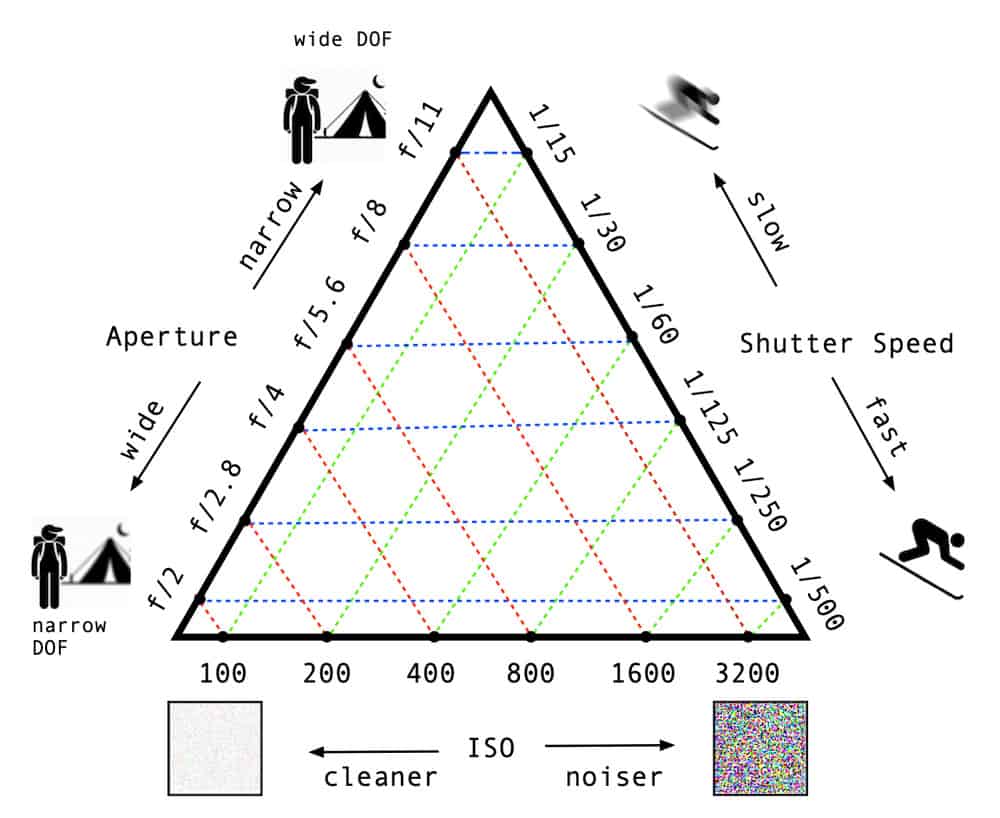
We can illustrate how the exposure triangle works with a simple example.
Let’s assume the scene you want to photograph is properly exposed (exposure value equal to 0 EV) for f/5.6 aperture, 1/100s shutter speed, and ISO 100.
The exposure triangle tells you that the scene will also be properly exposed for all combinations of aperture, shutter speed, and ISO that do not change the total exposure value.
Some of those combinations are:
- f/2.8 (+1 EV), 1/200s (-1 EV), ISO 100 (0 EV) = 0 EV
- f/8 (-1 EV), 1/50s (+1 EV), ISO 100 (0 EV) = 0 EV
- f/8 (-1 EV), 1/100s (0 EV), ISO 200 (+1 EV) = 0 EV
Where the numbers in parentheses are the changes in the exposure values with respect to the settings of reference (f/5.6, 1/100s, ISO 100).
While knowing how to combine those settings while not changing can help you with challenging light conditions, such as those in night and indoor photography.
The Role Of The Aperture In Photography
By considering the exposure triangle alone, you may get the impression that aperture, shutter speed, and ISO value are interchangeable, but that couldn’t be more wrong.
Aperture not only controls the amount of light you can collect in a given time, but it also affects:
- depth of field;
- lens vignetting and image sharpness;
- optical aberrations, such as coma and chromatic aberration;
Depth Of Field
When you focus your lens, you focus on a plane: everything that is in front or behind that plane is, technically speaking, out of focus.
The distance between the closest and farthest objects to the focus plane that appear to be in focus is called depth of field.
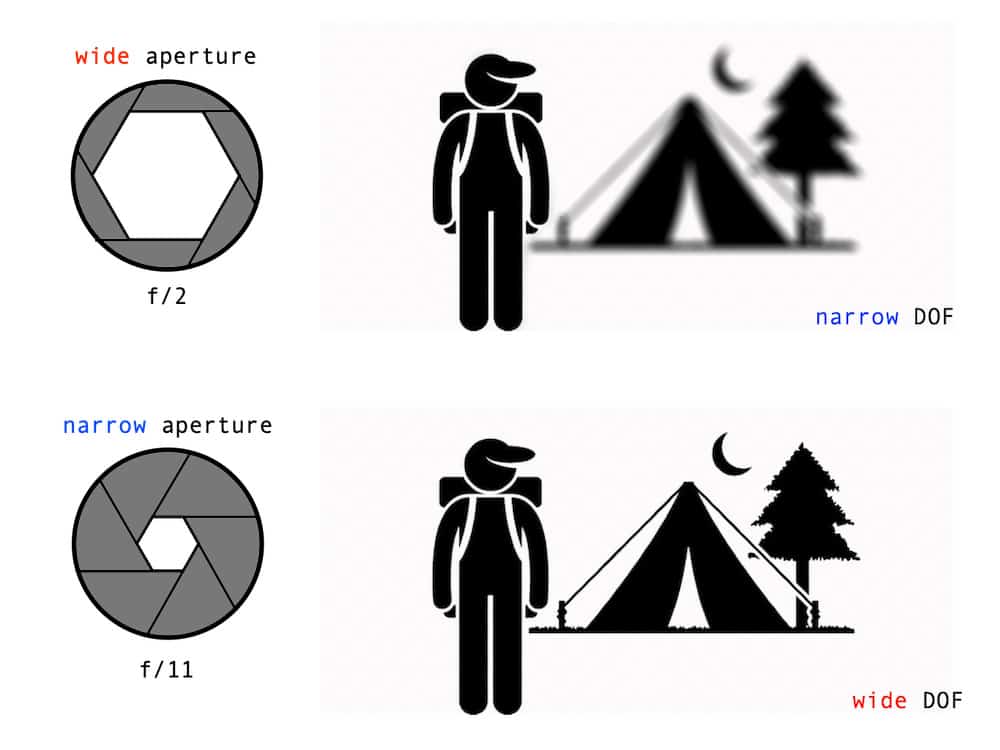
Is It Better To Have A Higher Or Lower Aperture?
To keep it simple, the wider the aperture, the more narrow the depth of field becomes. This ability to control the depth of field is crucial in photography.
A wide aperture from up close will throw out of focus everything behind your target, making. The background blurred and less distracting. This is a must in portrait photography.
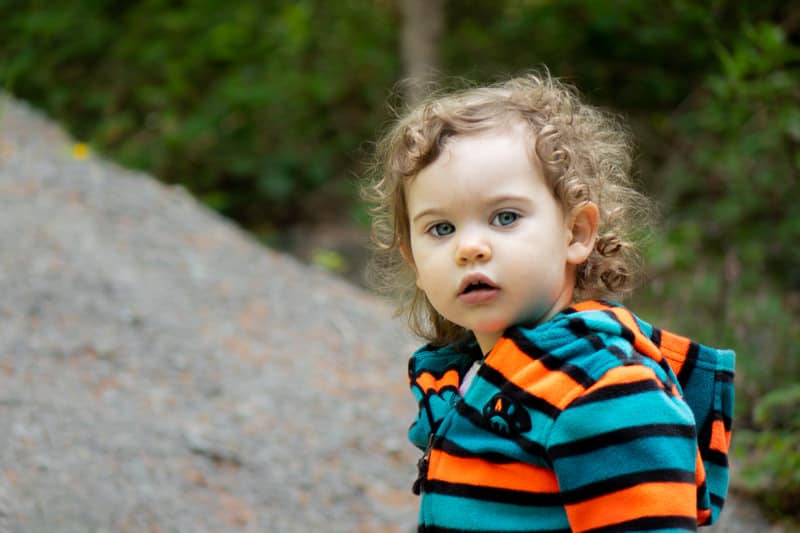
A small aperture, such as f/8 or f/11, particularly with wide-angle lenses, ensures you have enough depth of field to get most of the scene sharp. This is a must in landscape photography.
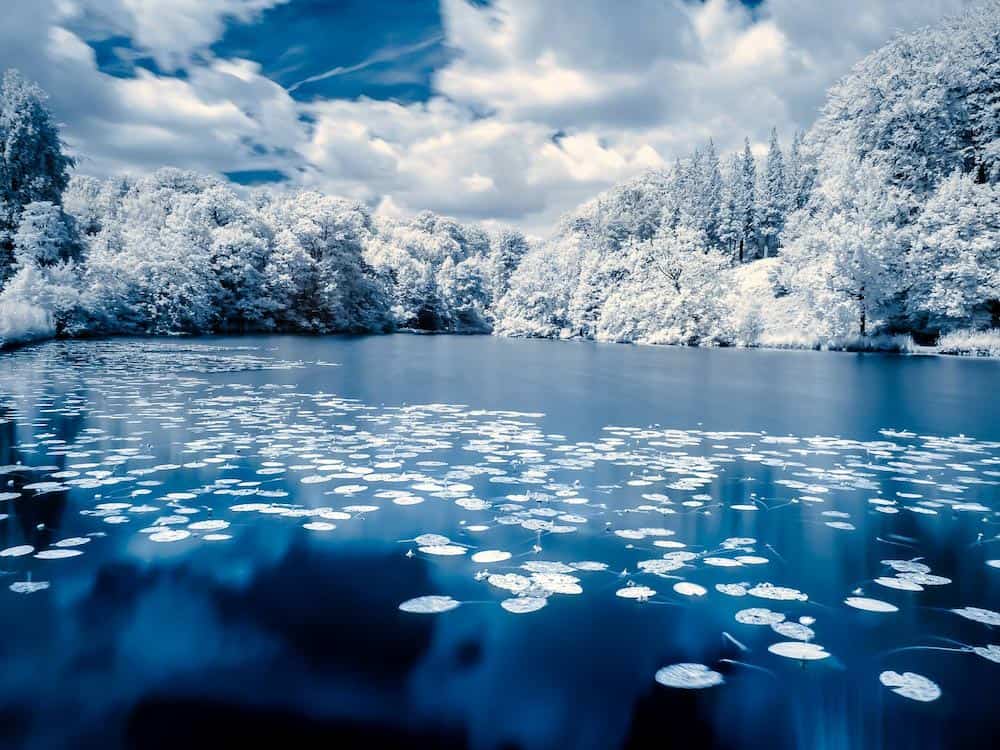
Vignetting And Sharpness
It is hard to build a lens that is sharp wide open, particularly with large apertures.
Usually, when used wide open, lenses produce images that are somewhat softer at the edges, with a fair amount of vignette (corner darkening).
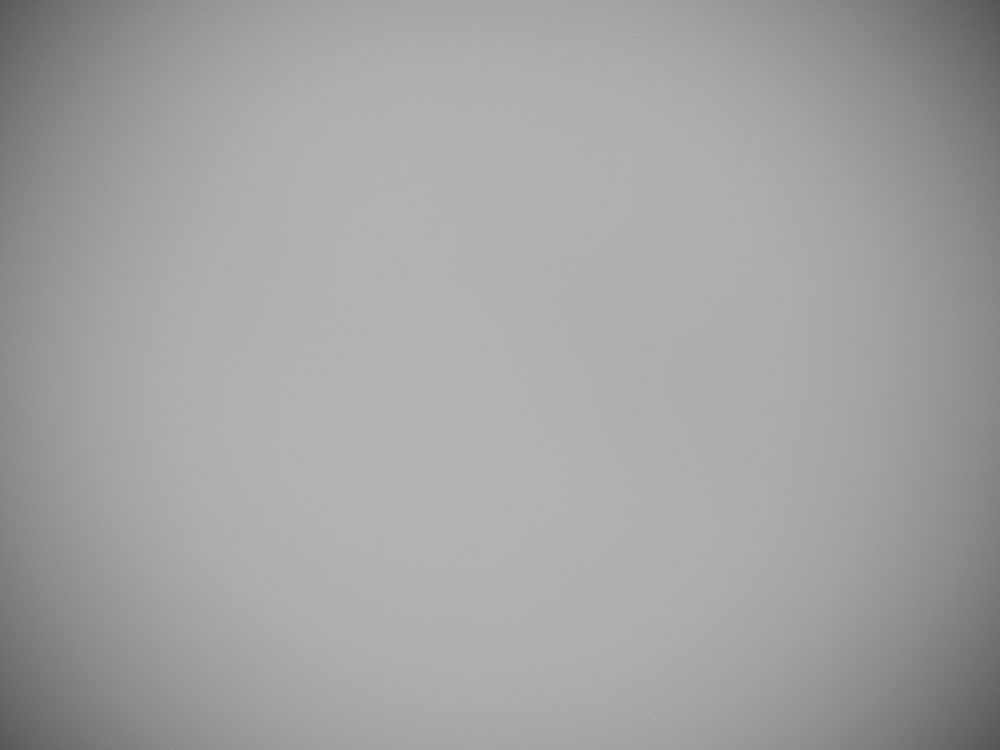
By stepping down the aperture, you will improve the overall sharpness of the image and reduce the amount of vignette.
Most lenses have a sweet spot, where optical performances (sharpness, contrast, etc.) are at their best, usually for values around f/5.6 or f/8.
Optical Aberrations
Finally, the aperture has an effect on the optical aberrations produced by your lens. In particular, stepping down the lens from wide open, you will reduce chromatic aberration (purple fringes) and coma.
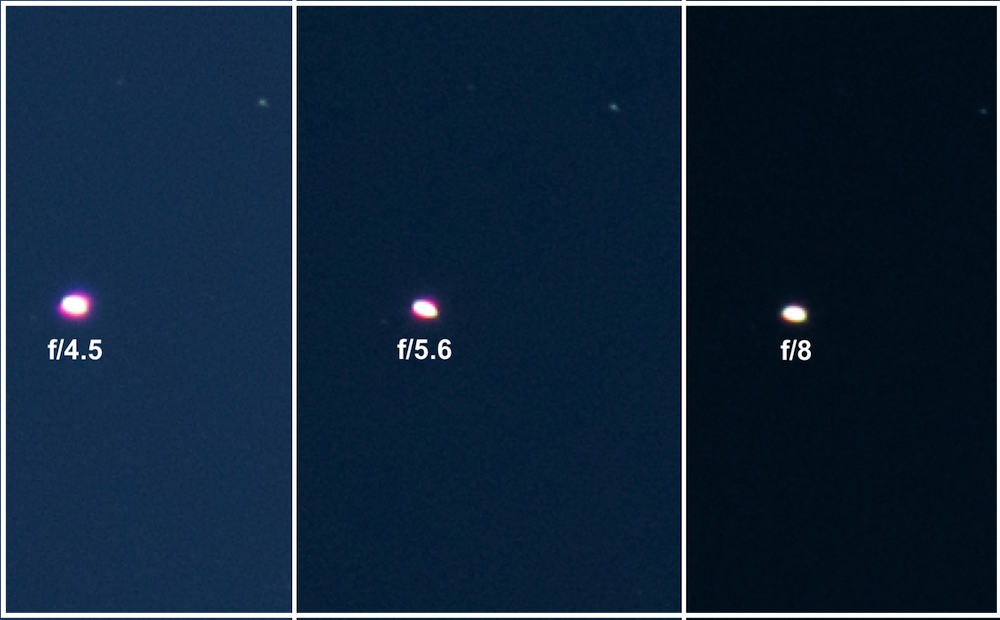
Which Aperture Setting Is Better For Astrophotography?
Prefer Telescopes With A Large Aperture For Better Results
When observing or photographing the night sky through a telescope, the rule of thumb among astronomers and astrophotographers using telescopes is that “aperture is king.”
Large scopes have better resolving power than smaller ones, thus offering a more detailed view.
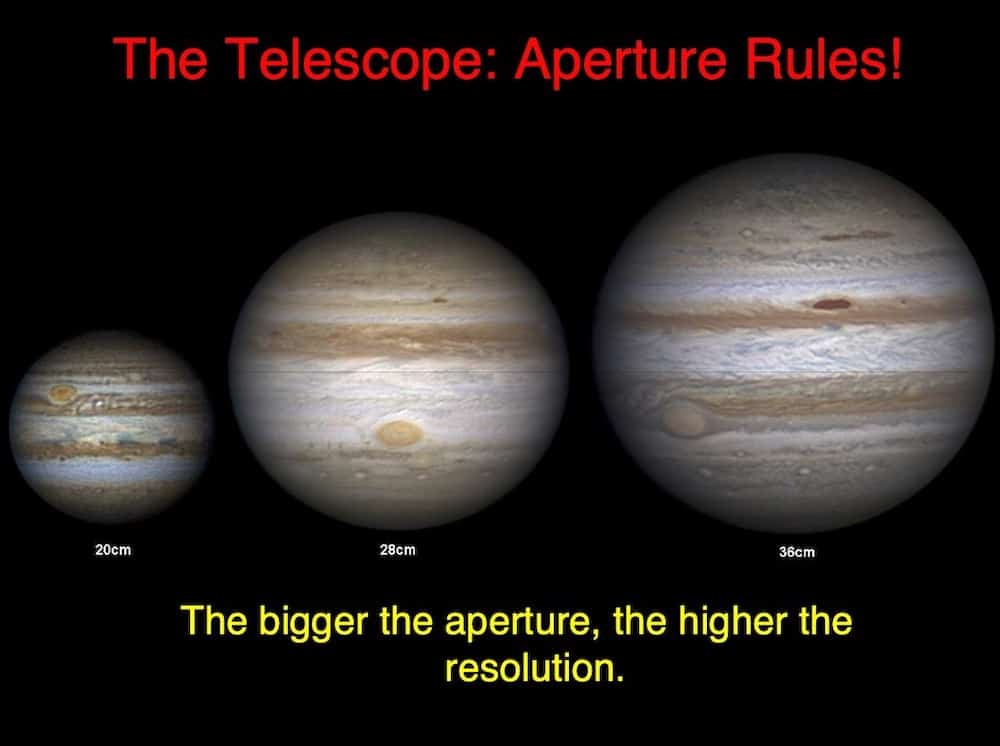
Large scope are also relatively fast, meaning the view is brighter and can offer a good deal of magnification without severely dimming the image.
Prefer Fast Lenses With Good Glass
If you are using photographic lenses and you are tracking the star movement, you may not need a fast lens in the beginning, but a lens with a maximum aperture between f/1.4 and f/4 is a must.
Good lenses are optically well corrected, having low optical aberration and producing sharp images even wide open.
How To Set Your Aperture For Night Photography
Night photography is quite a broad term, and it includes starry landscapes, nocturnal cityscapes, and, of course, astrophotography.
The key is to choose the right aperture for your scene, looking at the brightness of the target and if you have to deal with moving subjects, such as the stars.
In nocturnal cityscapes, stars are often not visible, and buildings do not move. Therefore I set my aperture somewhere between f/5.6 and f/8 to have maximum sharpness and depth of field.
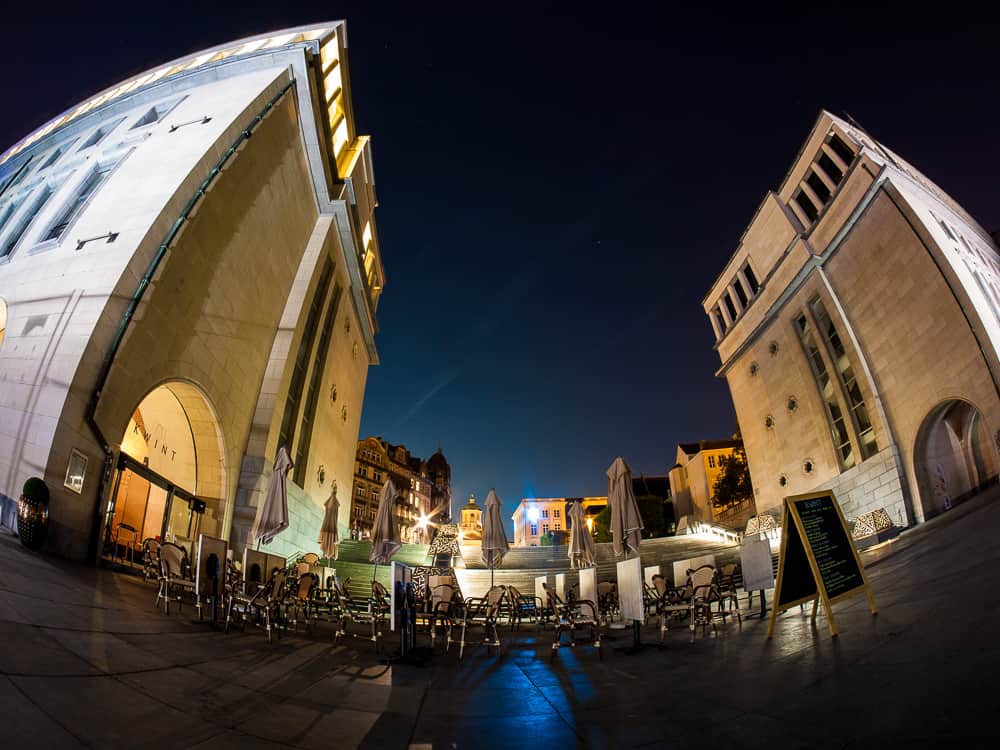
Selecting The Right Aperture For Your Scene
With the planets too small to be photographed with most photographic lenses, the Moon is the brightest object in the night sky, and an easy, yet interesting, target.
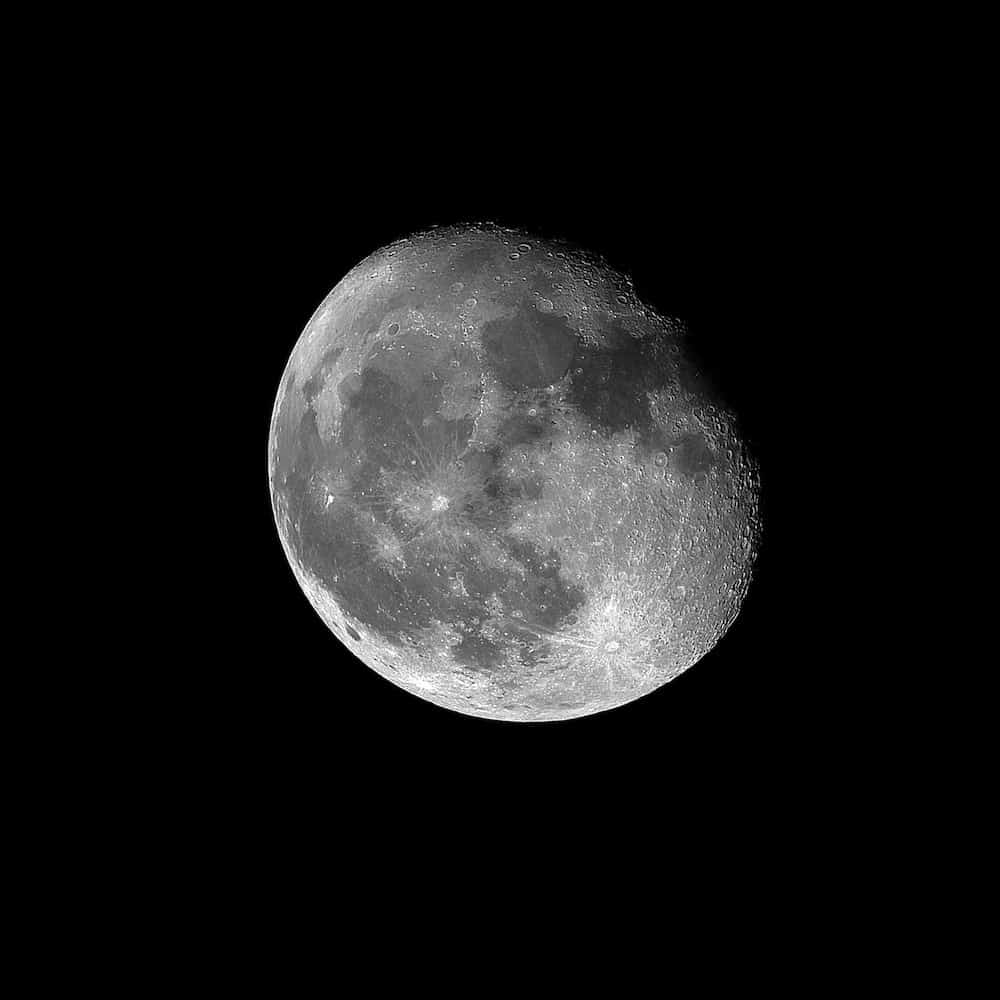
To properly set your camera to photograph the Full Moon, there is an empirical rule called Looney 11.
The rule says the Full Moon is properly exposed at f/11, 1/100 and ISO 100. Or for any of the equivalent combinations from the exposure triangle.
For different lunar phases, the Moon is darker, and you have to increase the aperture. Using slow shutter speeds is not a good idea as effects from bad seeing will affect your photos.
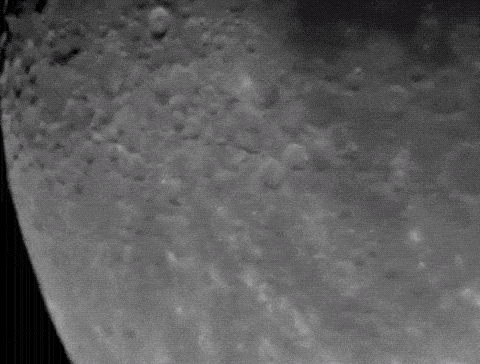
Eventually, particularly if you are shooting for image stacking, you can use higher ISO to get a better combination of aperture and shutter speed.
For deep-sky object (DSO) astrophotography, you need much faster lenses as your targets are far less bright than the Moon.
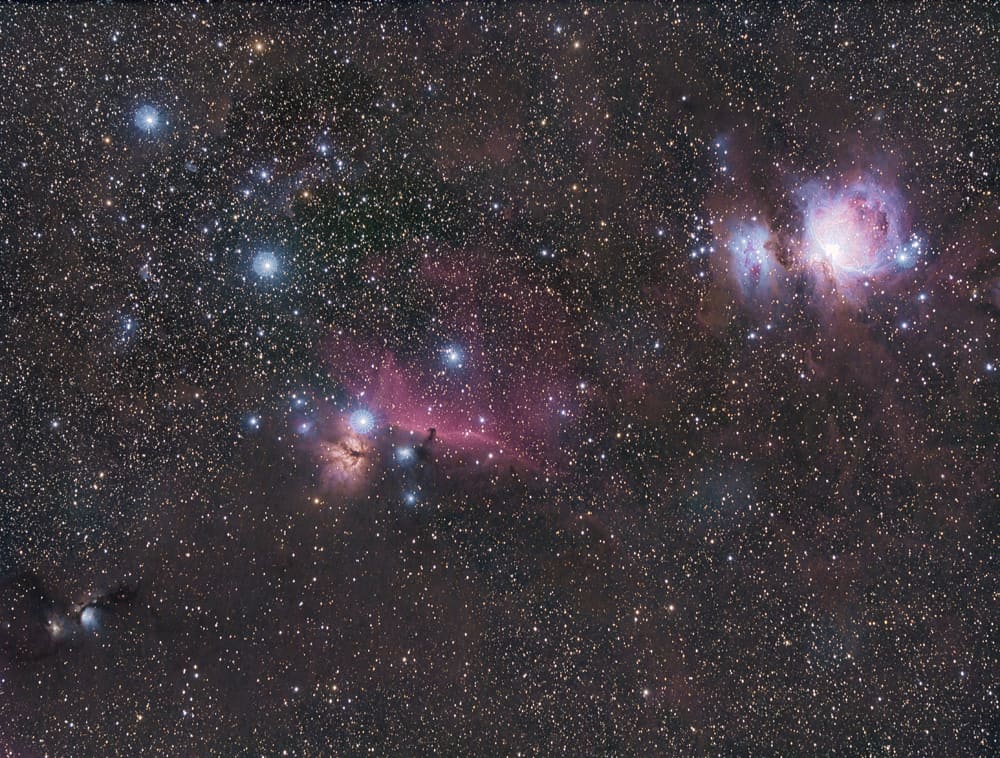
For DSO, you ideally want to use lenses faster than f/4 or even f/2.8.
Fast lenses have the advantage that will still be fast once you stop them down a little to reduce vignetting and optical aberration.
Conclusions
Aperture is much more than just light passing through a hole. In this article, we have seen what aperture is for different optical systems, and you learned how it affects a photograph.
With practice, you will master it and use it to create compelling images.
